Juno will pass over the surface of Europa this week in our closest view since the Galileo mission, aiding future exploration efforts.
Updates:
October 6, 2022: NASA has released a new, even more impressive photo of Europa's incredibly fractured and folded surface. Read about image details in NASA's press release.
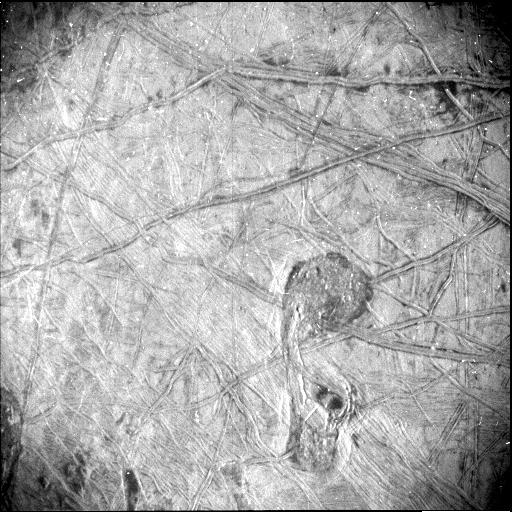
NASA / JPL-Caltech / SwRI
September 29, 2022: NASA has released the first photo of the flyby. It doesn't have the enhanced color of the Galileo images, but still shows the same striking fractures criss-crossing the moon's surface. Read more in NASA's press release.
Check out more raw images of Europa from JunoCam, plus processed images here.

NASA / JPL-Caltech / SWRI / MSSS
Juno is about to explore one of the solar system’s enigmatic moons up close. As NASA’s latest mission to Jupiter, Juno is currently the only active mission at the planet. Now in its extended mission, the spacecraft is set to complete a series of close flybys of the large Galilean moons, both to examine these worlds up close and to tighten its own orbit. Next stop: Europa.
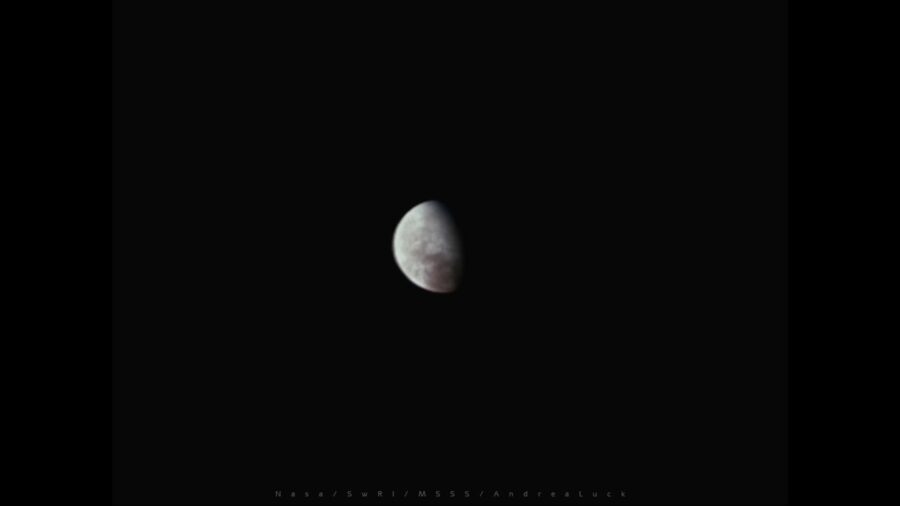
NASA / JPL-Caltech / SwRI / MSSS
The flyby is planned for Thursday, September 29th at 5:36 a.m. EDT / 9:36 Universal Time (UT), when the spacecraft will pass just 358 kilometers (222 miles) from the moon’s icy surface. This flyby will occur as part of perijove 45, or Juno's 45th pass around Jupiter. The maneuver will also shorten Juno’s orbit from 43 days down to 38 days.
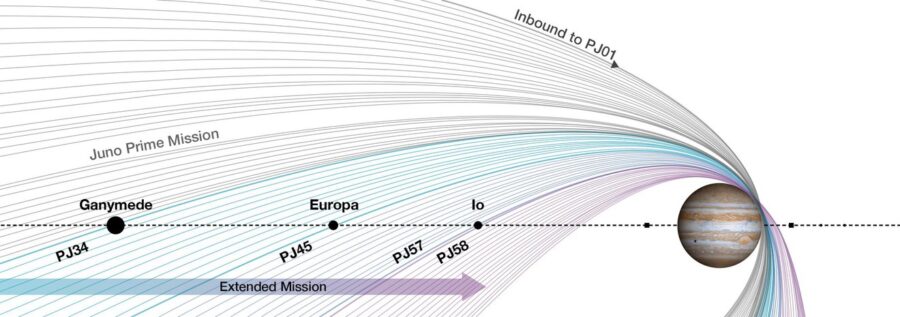
NASA / JPL-Caltech / SwRI
This will be the closest pass of Europa since the Galileo mission’s 351-kilometer (218-mile) pass on January 3, 2000. The image from Galileo below gives us some idea of what to expect.
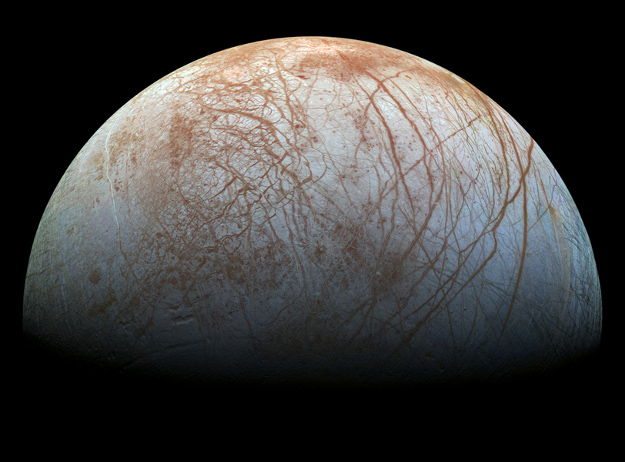
NASA / JPL / SETI Institute
Flyby Science
Juno will begin data collection during the Europa pass while the spacecraft is still 51,820 miles (83,397 kilometers) out. The spacecraft will be moving 23.6 kilometers per second (53,000 mph) relative to Europa during the pass. Juno must then swiftly reorient itself toward Jupiter for the perijove pass 7.5 hours after the Europa flyby.
It’ll be all sensors on-deck for Juno during this week’s Europa pass: the spacecraft’s magnetometer (MAG), Radio and Plasma Waves Sensor (WAVES) and Jovian Auroral Distributions Experiment (JADE) will take measurements of the plasma wake trailing the moon as it interacts with Jupiter’s magnetosphere. Juno will also measure Europa’s ionosphere, using its medium-gain X-band radio antenna, and the Jupiter Energetic-Particle Detector Instrument (JEDI).
MAG and WAVES will also hunt for elusive water plumes jetting from fissures on Europa’s icy surface. These have been suspected as seen from the Hubble Space Telescope in 2014. With a little luck, Juno might spy some activity as well.
Juno will also employ its Microwave Radiometer to characterize the temperature and composition of Europa’s icy crust. This measurement would be a first for the moon, and could go a long ways towards telling us just how thick its water-ice crust is. This crucial data will help to inform the Europa Clipper mission, set to arrive at Europa in 2030 and make 50 passes near the moon.
“We’re happy to provide data that may help the Europa Clipper team with mission planning , as well as provide new scientific insights into this icy world,” says Juno principal investigator Scott Bolton (Southwest Research Institute)
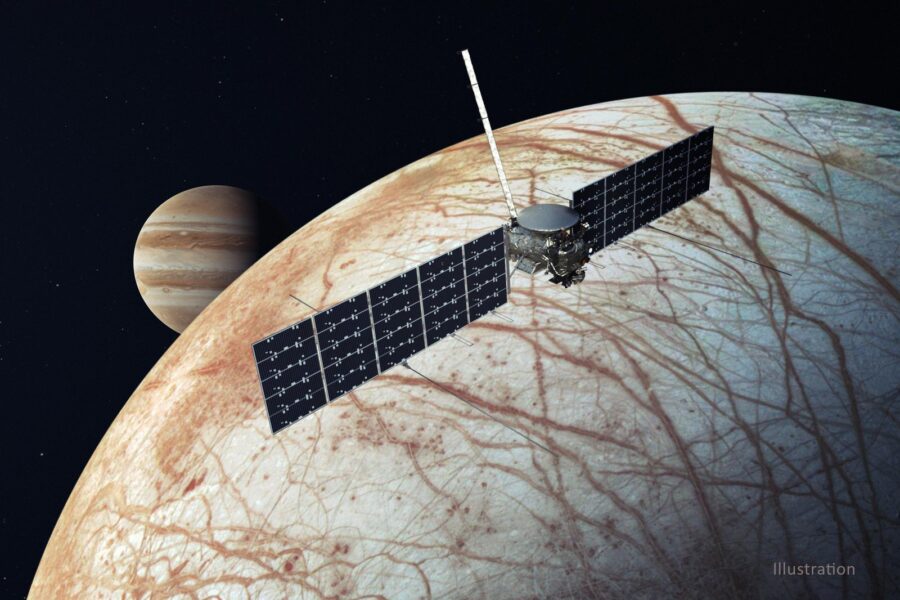
NASA / JPL-Caltech
Finally, expect to see visible light images courtesy of JunoCam, which will image the surface of Europa down to a resolution of 1 kilometer. Although Juno will be in the moon’s shadow at closest approach, Jupiter (which just passed opposition yesterday) will back-light the moon, similar to how Earth lights up the dark side of the crescent Moon with Earthshine. The Juno team plans to use the black and white Stellar Reference Unit to image Europa's night side of Europa, and the Jovian Infrared Auroral Mapper will also image the moon at infrared wavelengths.
Juno's Extended Mission
Planned for a nominal one-year mission, Juno arrived at Jupiter in July 2016 and has been in an extended mission since July 2021. The extended phase enables controllers to be more daring with the spacecraft.
Juno's electronics and solar panels are sensitive to Jupiter’s intense radiation field, so the spacecraft stayed in a wide-ranging orbit for its primary mission. But the extended phase will include multiple flybys past Ganymede (2), Europa (3), and Io (11). Indeed, even before the official end of the primary mission, Juno was already headed toward its first close approach to Ganymede:
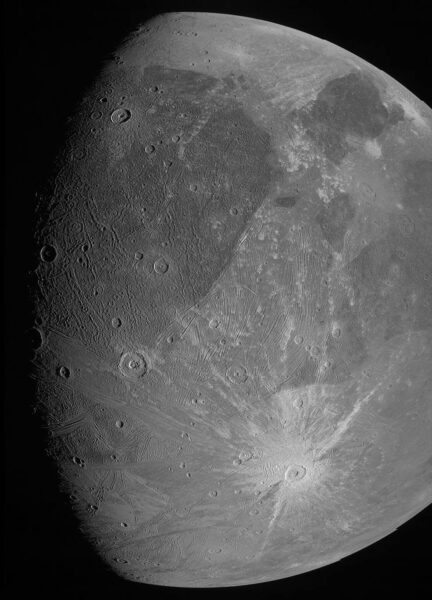
NASA / JPL-Caltech / SwRI / MSSS
As the spacecraft continues to conduct flybys and tighten its orbit, those maneuvers will incur risk. The next flybys after Europa are a pair of flybys past the innermost Galilean moon, Io, planned for December 2023 and February 2024, which will reduce Juno's orbital period to 33 days.
It has been about a generation since we’ve seen Europa up close, but it’ll be worth the wait — and the risk. We’ll update this post with photos of Europa courtesy of Juno as they drop later this week.
 2
2









Comments
Kathleen-Antol
September 30, 2022 at 6:02 pm
As fantastic as this fly by is, the background music is really gorgeous!! What is the name of this piece of music and which orchestra is performing it?
Kath
You must be logged in to post a comment.
AB
October 10, 2022 at 8:44 pm
The composer is Vangelis -- it's in the credits. Apparently it was a collaboration with NASA: https://en.wikipedia.org/wiki/Juno_to_Jupiter ; https://www.junotojupiter.com/
You must be logged in to post a comment.
You must be logged in to post a comment.